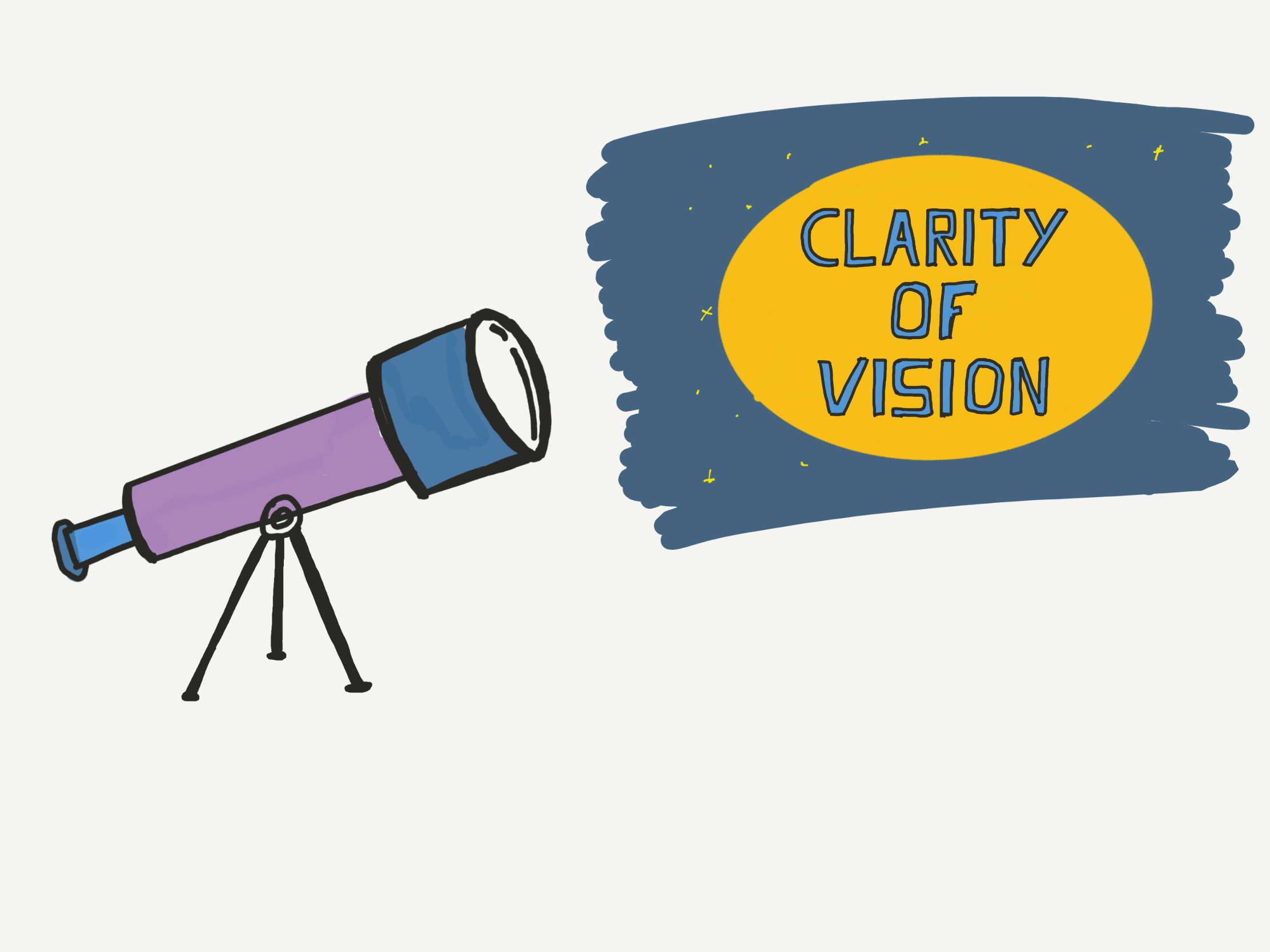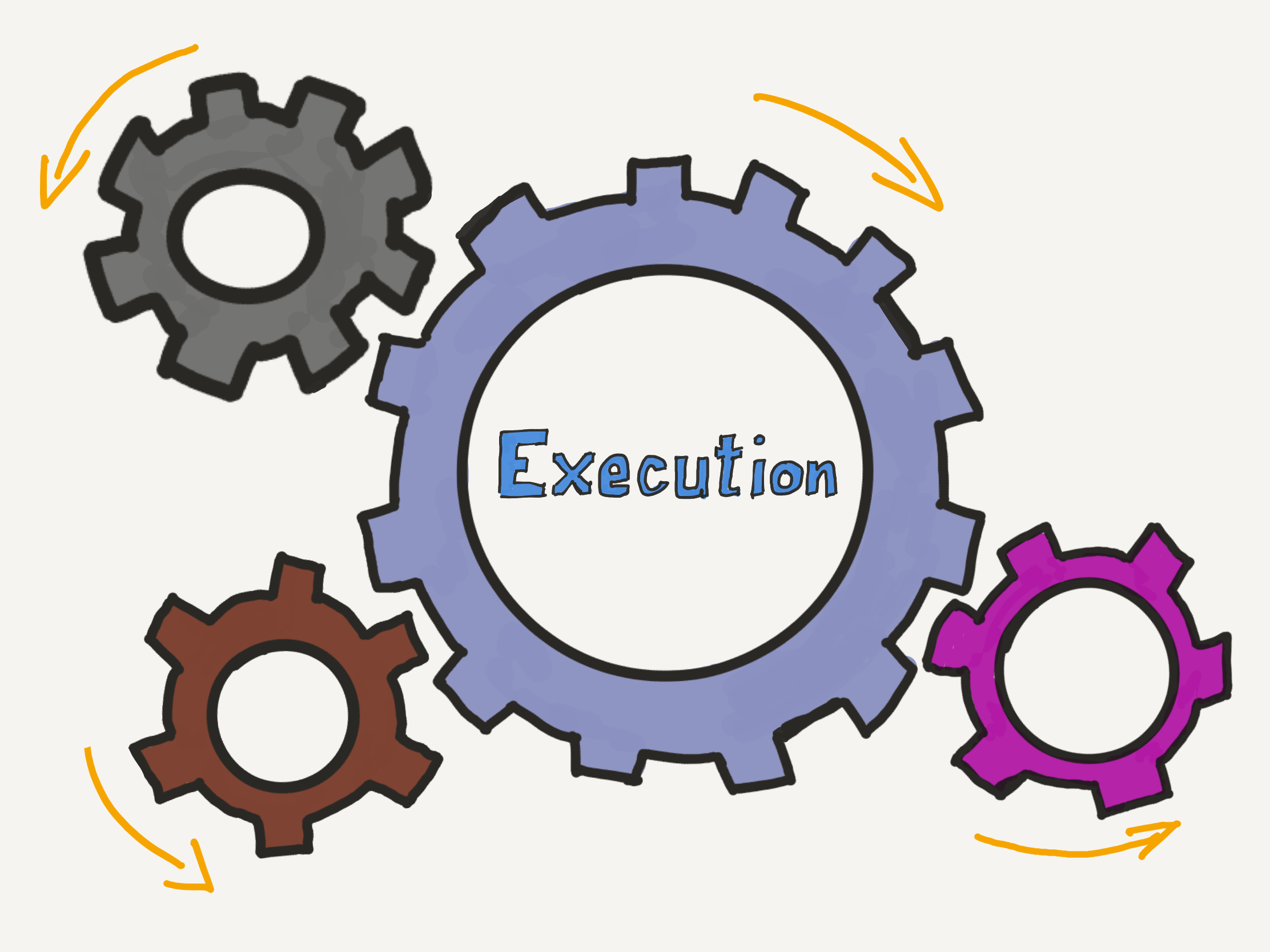In my 17+ years at Amazon and AWS, I have launched initiatives that succeeded, such as the launch of the marketplace business in Italy and Spain or establishing a global Innovation Lab at AWS, but I have also worked on or observed initiatives that failed. Even when teams are talented and resources are available, success eventually comes down to three factors: clarity of vision, sponsorship, and execution.
Clarity of vision

Clarity of vision means everyone shares a deep understanding of why your initiative matters to its intended audience. At Amazon, Working Backwards is the mechanism to achieve clarity of vision. At its core, it identifies the customer who will benefit from your initiative and what specific need of the customer it addresses. It describes the customer experience you are creating to address this customer need. Design Thinking is a similar human-centered approach to design products that are desirable, feasible, and viable. Both approaches help you understand why something matters.
Having a shared clarity of vision between stakeholders and execution teams is required to set clear priorities on what is most important. This reduces the risk of scope creep and other distractions that delay execution. With clarity of vision, you not only demonstrate a deep understanding of the problems you are solving or customer needs you are addressing, but you are open-minded about how to achieve that vision. An important aspect is the ability to validate your assumptions and continuously measure success, so that you can adapt when the world inevitably evolves.
However, I have also observed three common patterns that cause initiatives to fail:
- No shared clarity of vision: In situations with diverse stakeholders and product/engineering teams operating independently from the business, there is a high risk that everybody believes they have clarity of vision, but in reality their visions do not align. At best, this leads to friction between teams delaying execution. At worst, initiatives eventually fail after significant frustration, wasted effort, and money.
- Focus on ephemeral trends: Whenever there is a ‘hot trend’ or emerging technology such as generative AI, the temptation grows to demonstrate your innovative chops by adopting these trends. This is perfectly fine, and even a good practice if you decide to use that technology intentionally to contribute to your vision. Using new technologies to measurably improve customer experience is good. Using them without considering the big picture on customer experience is a recipe for failure.
- The work is never done: Achieving clarity of vision is not a checkbox item in a project plan to get approval to build what you have decided to build. This sounds obvious, but many teams treat exercises like writing a Working Backwards document as a one-off exercise. In practice, the world is constantly evolving, and you must continuously evaluate progress against your vision, and adjust course as needed.
In summary, think of clarity of vision as the north star that keeps everybody aligned and focused on what matters most. Use tools such as Working Backwards or Design Thinking to achieve that clarity of vision, write it down, and share it broadly with stakeholders.
Sponsorship

The most underestimated and critical ingredient for success is strong sponsorship from people in positions of power. Sponsorship means commitment to an initiative’s success through resources, expertise, and goodwill. This applies broadly across roles and company sizes. If you are a startup, you may need sponsorship of your venture capitalists. If you are an early career employee, you need sponsorship of your manager to pursue an experiment. Running a cross-functional initiative within an enterprise typically requires sponsorship of executives across organizations. Even the CEO will need sponsorship of the board.
Without sponsorship, good ideas and initiatives die. Powerful and influential sponsors committed to the success of your initiative facilitate access to resources and funding, broader visibility, and expertise. They remove roadblocks and align goals and political agendas. The success of the initiative they sponsor becomes essential for their own success.
The 3 most common failure modes I have encountered when it comes to sponsorship are:
- The merit of good ideas fallacy: Most people believe that good ideas stand on their own, and that doing politics to promote them is distasteful. The reality is that even if an idea is great in itself, you need resources and support to validate it. People in power juggle competing priorities and have limited capacity for new ideas.
- No skin in the game: Potential sponsors may say they like your initiative without having a vested interest in its success. If you misunderstand their intent, whether deliberately or not, you risk building on a foundation that collapses when you need resources or political goodwill.
- Shifting power dynamics: Once you have secured a sponsor, stay vigilant about changes in organizational structure and power dynamics. An initiative that was the top priority for one executive can die very quickly when that executive leaves. High impact initiatives are susceptible to having powerful enemies with conflicting agendas and goals. Whenever the power landscape changes, you need to maintain or regain sponsorship of your initiative, potentially at the cost of adjusting your own priorities and objectives.
Ignore the need for sponsorship at your own peril. Maintain mutually beneficial relationships with your sponsors and stay proactive about power dynamics. Consider maintaining stakeholder maps for any initiative you own. Be intentional about how you influence both your supporters and detractors.
Execution

Execution means organizing people and work to deliver your initiative’s value. The right approach depends on context, including available skills, resources, and the environment you operate in. It achieves desired outcomes with minimal resources on time.
An execution model includes an organizational setup that favors short communication paths between stakeholders, and high autonomy for fast decision making. An example is Amazon’s 2-pizza team concept, where teams small enough to be fed with 2 (American) pizzas own a single service or product. This accelerates decision making by reducing dependencies on others. Depending on the size of the initiative, you need multiple such teams orchestrating their respective areas of responsibility. Organizing the actual work requires using clarity of vision (see above) as a focal lens to prioritize delivering what matters most. Inspect feedback from users and operational data to validate that you are achieving the desired outcomes.
Three non-obvious execution failure modes:
- Organizational silos: Whenever the work necessary to achieve your desired outcomes requires people to collaborate across organizational boundaries, execution slows down. Each silo has its own priorities, which rarely align. This leads to resource constraints, which require sponsorship across silos to resolve. A special case is where the organizational design has centralized functions such as engineering, business, marketing, etc. Cross-functional collaboration needed to achieve the shared vision happens inefficiently due to lack of transparency and alignment.
- Scope creep: When teams lose focus on what is most important to deliver, they build things that do not contribute to achieving desired outcomes. This is a direct consequence of not having a shared clarity of vision, whether it is engineering teams gold-plating their software, or stakeholders throwing in a ‘wouldn’t it be nice if we added <random feature>’, and nobody daring to challenge them. You can avoid scope creep by prioritizing with high judgment what matters most according to your clarity of vision.
- Neglecting operational excellence: When moving at high velocity, it is tempting to take shortcuts. When executing, gain velocity through rigorous prioritization on what matters most, not by cutting corners on foundations. Operational excellence is a set of practices that provides visibility into operational health and the ability to respond quickly to issues. If you neglect this, the volume of issues inevitably grows to a point where teams spend their entire time firefighting instead of achieving and improving on the desired outcomes of the initiative.
In summary, effective execution requires organizing teams for autonomy and fast decision-making, maintaining laser focus on what matters most, and building operational foundations that prevent firefighting. Use your clarity of vision to guide prioritization, break down organizational silos where possible, and invest in operational excellence from the start.
Conclusion
The importance of having clarity of vision, sponsorship, and execution is proportional to the scale of your initiative. Having only two out of three does not cut it: lack of sponsorship inevitably leads to resource constraints that slow execution to failure; bad execution does not deliver the right outcomes, which leads to loss of sponsorship; a failure in clarity of vision leads to poor execution delivering the wrong outcomes, which in turn leads to loss of sponsorship. A simple test to see if you have all three factors covered is to ask the following questions:
Clarity of Vision
Remember that this needs to be shared among all involved parties in the initiative!
- Why is it important?
- Who are we building this for, and what is their key benefit?
- What is the benefit for us?
Sponsorship
- Who are the potential sponsors who have skin in the game and the ability to unlock resources?
- Are there any powerful detractors with misaligned goals?
- Do you have the attention and support of your sponsors?
Execution
- Are people organized for autonomy and fast decision-making?
- Do we have shared clarity of vision on what deliverables are most important?
- What feedback loops do we have to know whether we are moving in the right direction?
It is ok to not have figured everything out of the gate. Things evolve over time. For example, your clarity of vision needs to adapt as you learn more about your customers. Organizations and their goals change over time, which impacts sponsorship. Your initial execution approach might not work, or new technologies like AI might open new possibilities. Clarity of vision with a focus on addressing durable needs helps with dealing with these adaptations.